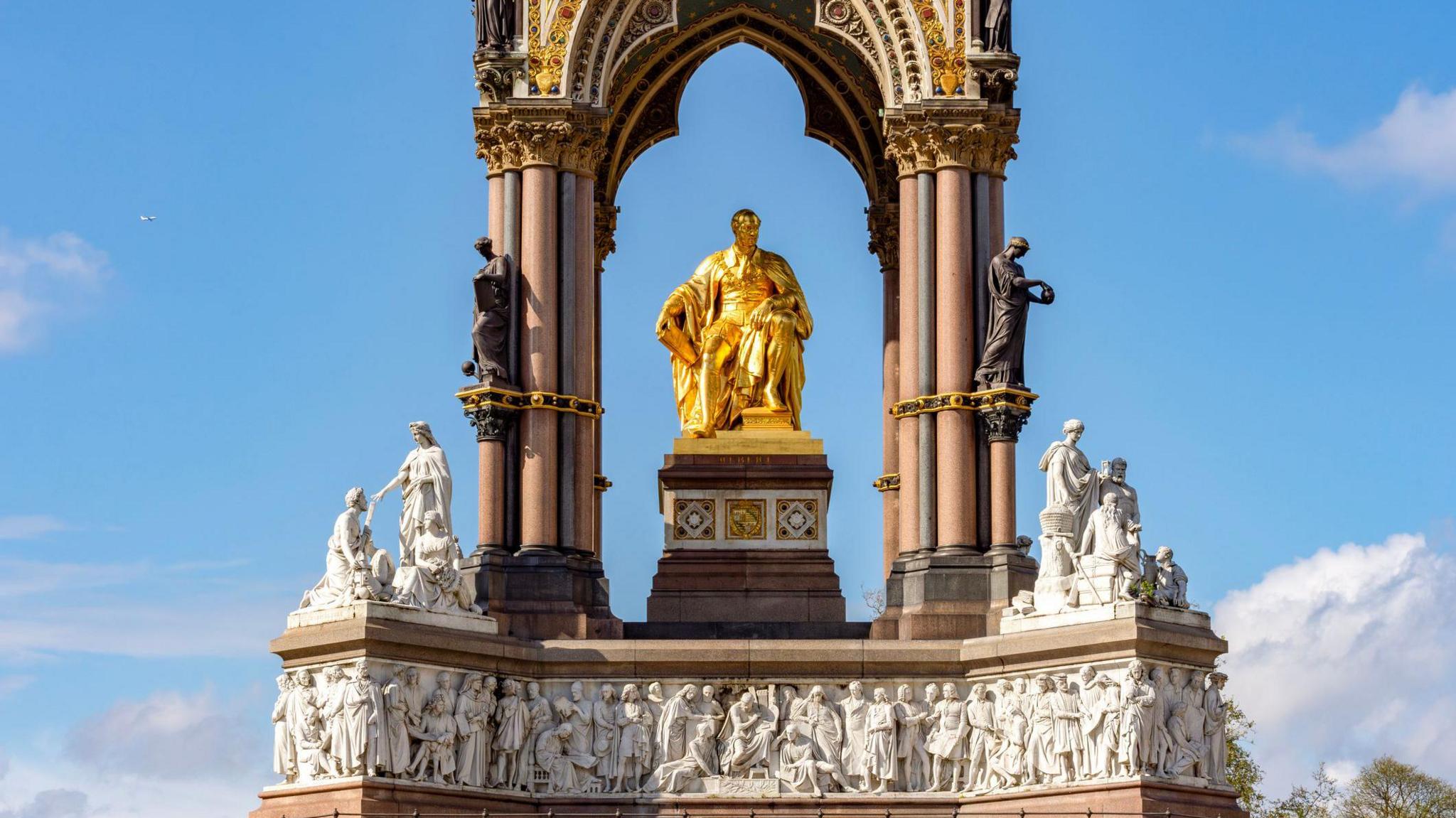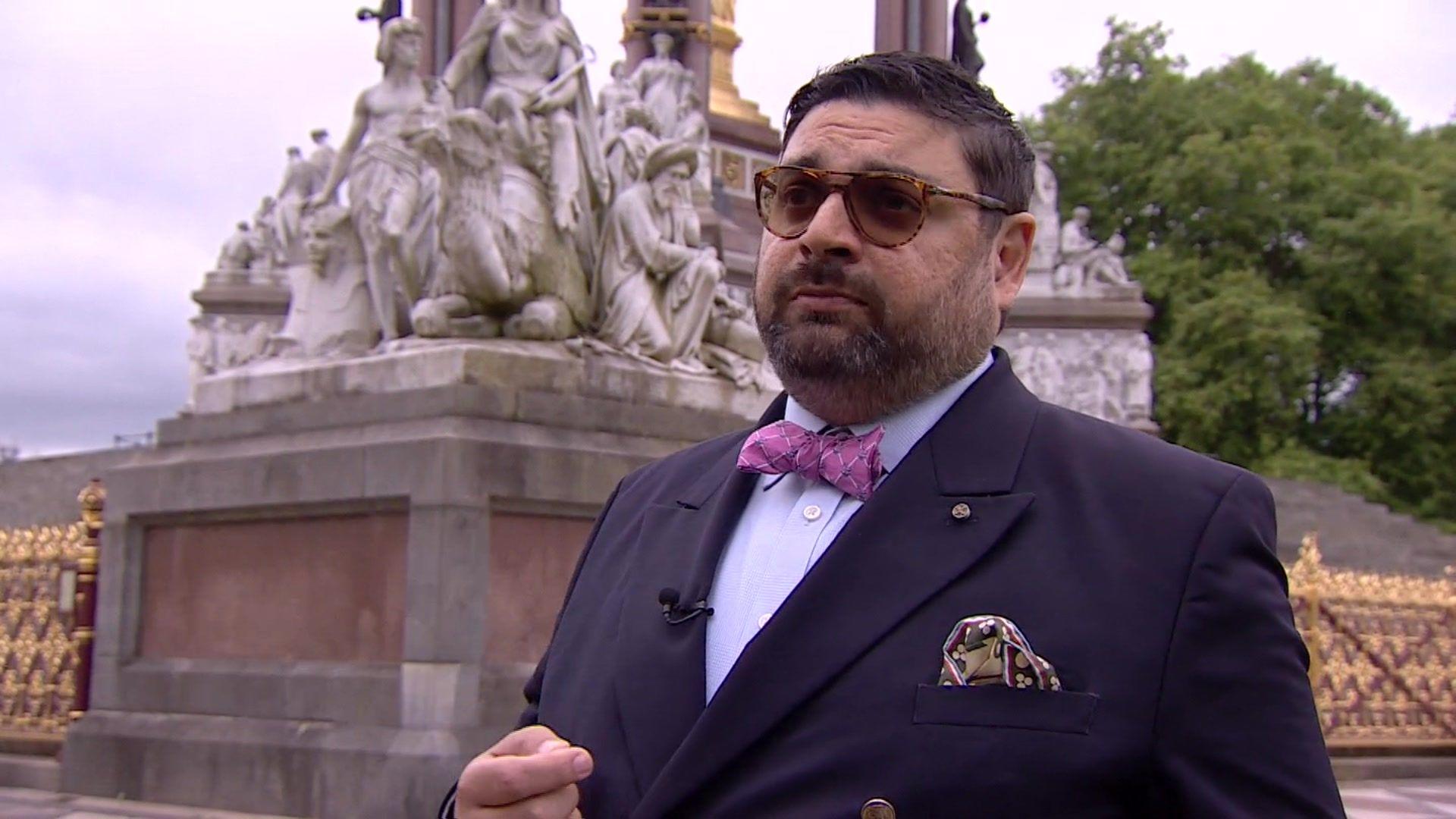Royal Parks drops blog calling memorial 'offensive'

The Albert Memorial was completed in 1872
- Published
The body in charge of London's royal parks has removed a blog from its website which called the Prince Albert Memorial "offensive".
The monument in Kensington Gardens, dedicated to Queen Victoria's consort, depicts him seated and surrounded by figures representing Europe, Asia, Africa and the Americas.
A now-removed blog on the Royal Parks website had aimed to contextualise the monument, writing that it features "racial stereotypes" considered offensive in modern times.
A Royal Parks spokesperson said: "In light of recent feedback, we will review the online information we have provided to tell the story of the Albert Memorial.”
The monument was commissioned by Queen Victoria shortly after her husband's death from typhoid aged 42.
As well as a memorial to the prince consort, showing his passions, it was also designed to to reflect the strength of the British Empire across four continents.
The BBC did not see the blog post before it was taken down earlier this week.
The Evening Standard reported it as saying: "Representation of certain continents draws on racial stereotypes that are now considered offensive."
The post highlighted the Africa statue, which depicts a European woman reading a book to a tribesman.

The Royal Parks website previously said the Africa statue contains "racial stereotypes"
The blog said: “Victorian guidebooks to the memorial describe how this ‘uncivilised’ man hunches over his bow. This pose was intended to represent him ‘rising up from barbarism’, thanks to his western teacher.”
In an effort to contextualise this, the Royal Parks post said: “Though the Empire has traditionally been celebrated as a symbol of British supremacy, many today consider this view as problematic because colonialism often relied on the oppression and exploitation of people, resources and cultures.”
BBC News understands wording was updated last year.
Clive Myrie: The legacy of empire still affects us
- Published7 July 2020
UK should 'retain and explain' controversial statues
- Published25 September 2020
The spokesperson said: “We acknowledge that there are differing views on the historical context of many memorials."
They added that the Royal Parks aimed to "present information in a factual way" and the information on the monument would be reviewed.
Historian Rafe Heydel-Mankoo said: "It's undeniable that you would never create a statue today depicting a white woman talking to a black person in that way."

Rafe Heydel-Mankoo says the monument is an "important record of the time"
But he said that from a "Victorian perspective", the depiction was about trying to "lift up the world's population".
"While today it's politically incorrect," he added, "it's an important record of what was going on at the time."
Paul Anderson, the chief executive of Youth Voyage, a charity challenging racial inequality, said it was important organisations reflected on the wider context of historic monuments.
He added this would help ensure they were "more considerate of all the various communities".
In October, the then-Conservative government published guidance on a "retain and explain" approach to contentious monuments.
It advises owners and custodians should keep them in place but "complement them as necessary with a comprehensive ‘explanation’" on the wider history behind them.
Listen to the best of BBC Radio London on Sounds and follow BBC London on Facebook, external, X, external and Instagram, external. Send your story ideas to hello.bbclondon@bbc.co.uk, external